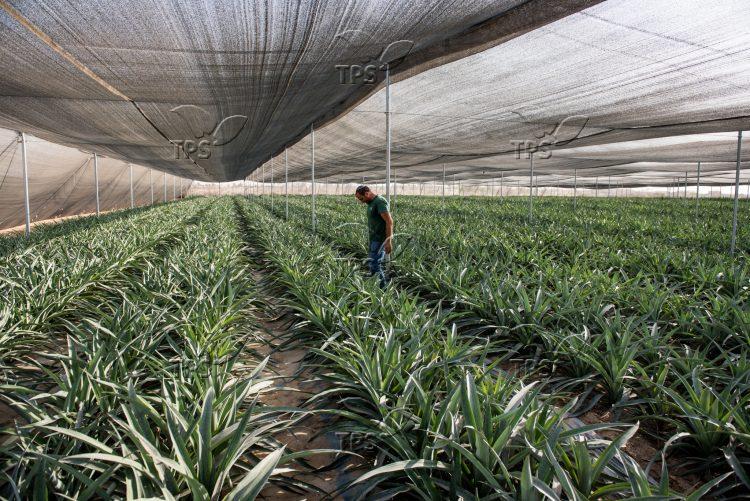Overcoming The Challenges Against All Odds
Jerusalem, 23 December, 2017 (TPS-IL) -- Just a few hundred meters from the Egyptian border, Yedidya Harush stands a top of a sand dune overlooking what less than a decade ago was a vast, inhospitable, empty expanse, stretching as far as the eye can see. The silence is almost deafening, penetrated only by the wind and the sound of gunfire and explosions, testimony to the fighting taking place not far away on the northwestern tip of the Sinai Peninsula between Egyptian forces and local Bedouins loyal to ISIS.
Pointing to the communities of Bnei Netzarim, Naveh and Shlomit, Harush confidently states that within a few years some 10,000 people will live in the three communities in the area known as the Halutza Sands.
Given the uncongenial surroundings, one could be forgiven for being a little sceptical, but Harish has this to say: “If you would have gone to Tel Aviv a hundred years ago when it was all was just sand and someone would have told you that one day it would be a big city, you would have thought they were crazy.”
For photos and video, click here
The 29 year-old came to Halutza in 2009 from Atzmona in Gush Katif, four years after the disengagement, Ariel Sharon’s 2005 pullout of all 8,000 Jewish settlers in the Gaza Strip.
The communities however were initially conceived years before the disengagement, after Ehud Barak had tried to include the Halutza Sands in a land swap with the Palestinians in 2001 – the Palestinians turned down the offer and Yasser Arafat was reported to have called it “a place of death” where nothing can grow.
Kibbutzim opposed to the idea set up a plan for a belt of communities running some 50 kilometers from Kerem Shalom, located near Israel’s tri-partite border with Gaza and Sinai, down the Egyptian border to Kadesh Barnea.
After the pull out from Gaza, the Netzarim community initially moved to the town of Ariel in Samaria. But soon enough city life became stifling for some, their green fingers started to itch and they decided they wanted to return to agricultural life.
The government allocated land for the three communities and after moving to mobile homes in nearby Yevul and Yated in 2009, 15 families moved down to Bnei Netzarim in 2009. Today there are 130 families each in the agricultural communities of Bnei Netzarim and Naveh and 50 in Shlomit, an urban community.
“We are just like the first pioneers, who came [to the Land of Israel] overcame all the challenges and succeeded against all odds,” says Harush.
One of the challenges faced by the Halutza Sands residents is how to grow agricultural produce on arid desert soil and in searing heat. The answer is hot houses, where farmers like Yedidya Hochman, who came to the area from Jerusalem’s Old City have succeeded in growing everything from staple crops like potatoes, carrots and onions to more exotic varieties such as etrogs, the yellow citron fruit used as one of the four species on the Sukkot holiday, and even pineapples.
Hochman who moonlights as head of the Bnei Netzarim council says that when the first families came to Bnei Netzarim there was literally nothing, just desolate sand that had never been farmed.
To help the next generation of farmers, Hochman set up with the help of the Jewish National Fund a young farmers program that helps them overcome the fact that they have to build up their farms from scratch at a massive investment and sometimes, as was the case for him, without any prior agricultural knowledge.
But the arid desert land isn’t the only challenge faced by the residents of Halutza: the nearest places of employment are at least an hour away, as is Ben Gurion University of the Negev in Be’er Sheva, where several of the residents of Shlomit study as part of the community’s student program.
The program gives participants a generous stipend and allows them to pursue academic studies together with Torah study in the evenings. Yoni Sleiter, 26, joined the program from Nof Ayalon near Latrun. He recently completed a BA in psychology at Ben Gurion and is now continuing to a Masters and Phd in organizational psychology at Bar Ilan University, some two-and-a-half hours away. Married with two children, Yoni has lived in Shlomit for the past three years since visiting family for the weekend and becoming hooked.
“I think the quality of life here makes up for all the difficulties,” he says. “You wake up in the morning and you see the smiles on the children’s’ faces and that gives you the strength to go on. But it isn’t easy we are living in the middle of nowhere.”
Harush, the JNF liaison to Halutza, says the student program will help create the human capital required to bring jobs and opportunities to the isolated community.
“We want to attract small hi-tech companies, light industry, business people who want to build businesses here both for ideological reasons and for economic reasons as they get various incentives to come here and we have quality people here who can work in those jobs, he says. “I believe it will happen, that’s why we launched our student program. If we want to attract industry we have to bring the right people.”
For Harush, people like Yoni Sleiter and Yedidya Hochman are 21st Century pioneers who confound the belief that young people today are only interested in modern comforts and aren’t willing to make sacrifices.
“People say that we’re in a post-Zionist era,” he says. “When they say that I tell them, if you want to see Zionism alive and kicking, come see for yourself in Halutza. Zionism is alive and kicking here in Halutza.”


